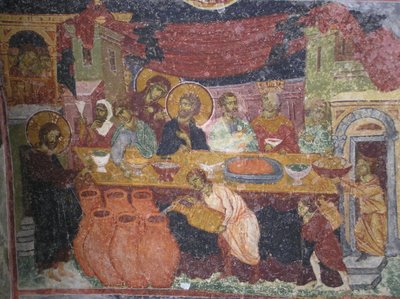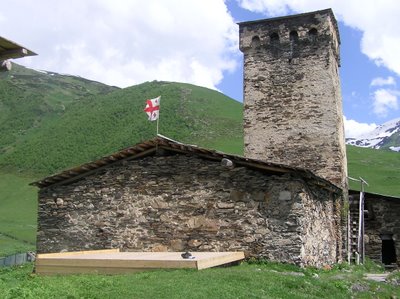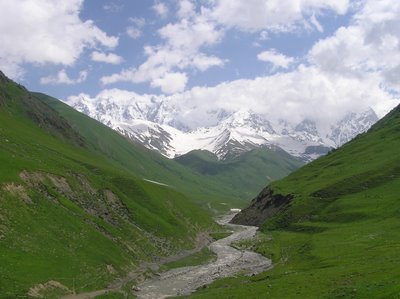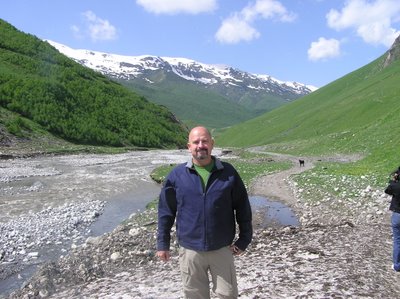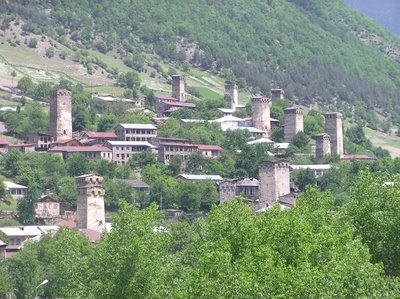I enjoy driving the backroads, savoring the small towns and the occasional cafe where the waitress might still call you "Hon." In these places, you catch glimpses of the unique, the off-beat, and sometimes, the downright bizarre.
Somewhat in that context, I always pay special attention to the churches I pass along the way: their archetecture (or lack thereof), their sloganeering, and especially their names. The Jesus Christ is the Answer, Inc. Church, painted in large red letters on the church roof is hard to miss, or forget. Somehow I suspect someone didn't really think this one through...."Hi, I'm with the Jesus Christ is the Answer, Inc. Church and I'd like to tell you that Jesus Christ is the Answer"....it just doesn't flow. I found the Little Zion Jerusalem Baptist Church, an odd juxtaposition, but then I found the Mother Zion Missionary Baptist Church completely baffling. I am familiar, of course, with the biblical usage of the word "Zion," but what is meant by "Mother Zion?" I don't get it.
But outside of these colorful varieties and the traditional Baptist/Methodist/ Church of Christ matrix, most everything else was of the "new" variety. By this I mean some variation of the phrase "New Life," "New Beginnings," "New Covenant," etc. or something or the other. In fact, 90% of these churches are some jumble of the following phrases:
New Life
New Beginning
New Covenant
Faith
Family
Fellowship
Praise
Community
Outreach Center
Just mix and match to come up with a jazzy name, find a metal building, and you are in business. Interestingly, many tend to avoid the word "church," thinking, I suppose, that if you don't call it a church, then people will come. So you end up with things like New Life Outreach Center, or New Beginnings Family Fellowship, or New Covenant Fellowship Center. A variation in a nearby county is Driven Life Outreach Center. Driven life? Excuse me. I don't mean to put too fine a point on it, but Muslims are driven. Christians are led. Bottom line: more often than not, new is not better.
I take all this in stride, but for some reason, I am baffled and a little disturbed by the phenomenon of the "cowboy churches." Those of you who don't live in the South or West may be puzzled by what I mean. These are churches specifically designed for "cowboys," where they can wear their boots and jeans and whatever else (hats?) and be comfortable and not feel out of place. Invariably, they meet in a large metal building that perhaps once was, or could still double as, a barn. Usually there is a roping arena out back, where the congregation can "rope," I suppose, after church.

What got me to thinking about this was the particular cowboy church I passed down in Central Texas--the All Around Cowboy Church. Now I understand that this is a rodeo term, but it just struck me as funny. If you are a part-time cowboy, or what we used to call a drug-store cowboy, then podner, you'd better jest mosey on down the trail, for this church is for "all around" cowboys.
And therein lies the heart of what bothers me about all this, and why it is just another example, par excellence, of the dissipation of Protestantism. The cowboy church philosophy, I gather, is to create a worship environment that is inviting to the "cowboy." I am speaking only for my part of the state, but real cowboys are pretty scare around here. There are folks who may have a few cows and who may occasionally ride a horse, but by and large it is merely an affectation, a stance, in many cases a mere fashion statement--a preference for wranglers and Tony Lama boots. (Now some truth in advertising here: I am not one, have never been one and have never aspired to be one. But my dad was--a real, old-time cowboy. He did other things, for sure, but at heart he was a cowboy, from cowboy country. So I do know the genuine article when I see it.) So, in effect, what we have here is a denomination created in large part for people who want to dress a certain way. I suppose it is no different than having Surfer Dude Churches in California and Hawaii, where you can carry your surfboard to worship. The raison d'etre of the cowboy churches is their particular hobby, or fashion preference. In my mind, this has trivialized Christianity down to the point where it cannot go much further.
Two final points and I'll stop "beating this dead horse." American religious groups of all stripes have long adopted casual dress in worship. (I have no problem with this, up to a point, because what bothers me more than casualness is pretense.) I never heard of anyone being turned away from any Protestant church around here for showing up in boots and jeans. It just wasn't an issue. So there was no real need for any separate churches. And I wonder what my reception would be at the All Around Cowboy Church if I showed up in khakis and loafers? It's just the same old thing. Finally, the image of the cowboy in American culture is one of lonely, rugged, individualistic, self-reliance. While these traits may serve you well in taming the frontier, I don't see a single one that should be a characteristic of Life in Christ.
By the way, the first picture is our cowboy of American myth. The second picture is the real thing, my g-g-uncle Henry who went up the Chisholm Trail in the late 1870s.

